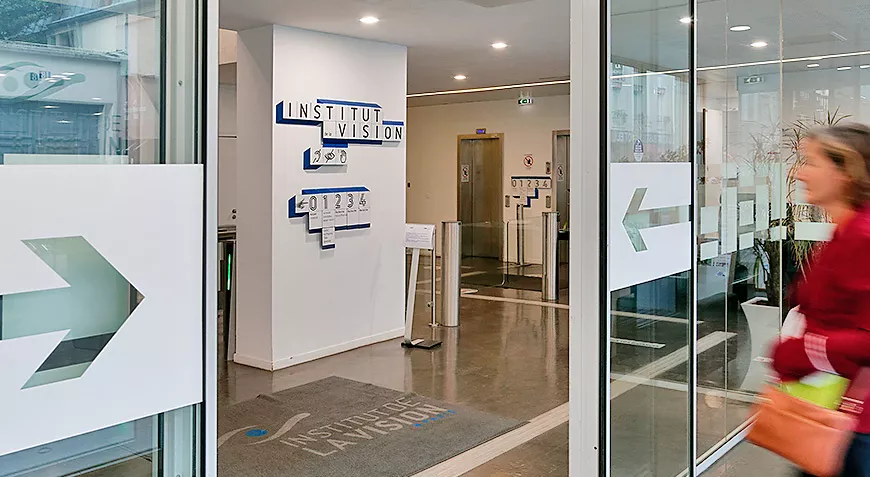Our strategy
The Institut de la Vision brings together nearly 300 people, researchers, engineer, technicians and clinicians. Together, they are working to develop new therapeutic strategies for rare vision diseases, which will also contribute to more rapid progress in the treatment of more common diseases.

Understanding vision
We analyse all the mechanisms that enable us to see.
Understanding how our visual system works and how it malfunctions is the number one challenge for research. The visual system is not just the eye, but a much more complex system that extends from the cornea to the brain. The eyes are the first stage in visual processing, but the information must be transmitted by the optic nerve to the brain regions involved in vision, which decode the information. Studying this involves multi-disciplinary teams specialising in neuroscience and biology, as well as engineering, chemistry, physics, computing and mathematics. In particular, we have taken up many challenges to develop 3D imaging techniques so that we can acquire the relevant data for each level of organisation of our visual system.
Preventing blindness
We develop strategies to preserve vision.
As the population ages, the prevalence of vision-related diseases is rising inexorably. Faced with this public health challenge, prevention remains the best way of slowing down and countering the onset of disease. To meet these challenges, we rely on our ability to develop interaction between biologists and clinicians. We can only fight well what we know well. Our aim is therefore to model each pathology to gain a better understanding of the underlying mechanisms of disease, and to test the efficacy of potential treatments rapidly to pave the way for better patient care. For example, for diseases affecting the retina, we use organoids, a technique patented by the Institute. It enables all the cell types in the retina (photoreceptors: cones and rods; ganglion cells, etc.) to be assembled in vitro to model a rare disease, with its mutations, and test possible therapies.
Restoring vision
We open up new therapeutic pathways to restore sight.
Restoring sight to people who have lost it is no longer a utopian dream. Visual restoration has become a clinical reality with the launch of implants and prostheses, such as artificial retina, created at the Institut de la Vision (with two companies spun off from the Institute: Pixium Vision and Gensight Biologics). It is also possible thanks to optogenetic therapy, which combines gene therapy and light waves. Optogenetics has reached the stage of clinical trials and has enabled a patient suffering from blindness to partially regain his sight. Technological progress should also soon provide solutions to the challenge of cortical visual prostheses, thanks in particular to the study of sonogenetic therapy being conducted at the Institute.
Evaluating the benefit
We verify the benefit of our innovations with patients.
Once proof of concept has been obtained for one of our research projects, the aim is to take it all the way to the clinic. To validate our results in humans, we rely on the Clinical Investigation Centre at the 15-20 National Hospital. More than sixty clinical studies are currently underway for age-related macular degeneration (AMD), hereditary eye diseases, diabetic retinopathy, glaucoma, etc. Our researchers do more than simply pass the baton: we work closely with clinicians to set up and monitor test protocols.
In addition to our research missions, the Institute's Disability Unit is working with industry to develop palliative solutions for patients who live with their disability on a daily basis. Major projects, dedicated to research into low vision, aim to develop new visual and sensory devices (augmented reality glasses, orthoses, etc.) and to test them with another start-up from the Institute: StreetLab.
